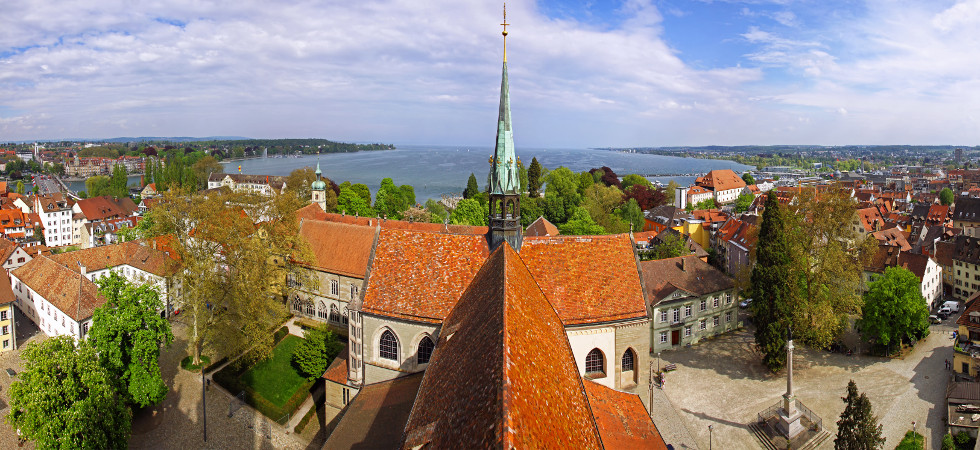Kris Griffiths takes a tour of the classically European towns and cities in four separate countries encircling this iconic Alpine lake.
Germany: Konstanz
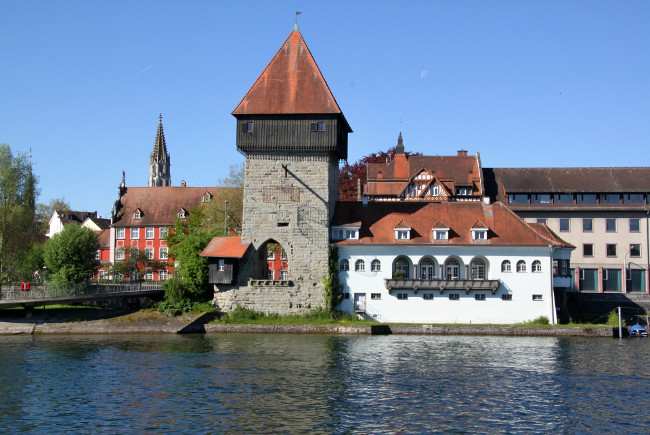
After flying into Zurich I arrive by train in the German city after which the lake is named.
Known locally as ‘Bodensee’, Constance is one of Central Europe’s largest lakes, whose 270km shoreline encompasses three countries – Austria and Switzerland are the others – while the microstate of Liechtenstein sits only a few miles south. My itinerary takes in all of them, and with no border controls it’s easily done within a few days.
Occupying a picturesque peninsula on the lake’s western edge, Konstanz is a real hidden jewel of a historical city, with ancient medieval buildings, atmospheric cobbled streets and alleyways, and a central cathedral dating back almost a millennium.
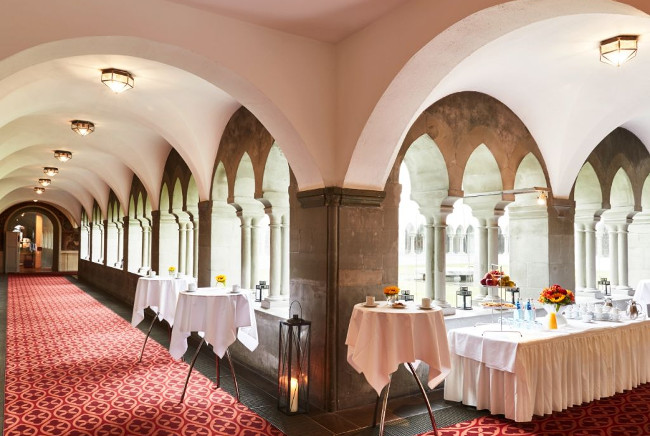
On its shorefront is an intriguing revolving statue called ‘Imperia’, whose revealingly split dress almost saw it banned by the council in the early 90s, although the harbour’s owners stuck to its guns and it’s since become Konstanz’s most photographed landmark (much more interesting than Copenhagen’s ‘Little Mermaid’!).
That night I stayed at the historic Steigenberger Inselhotel which overlooks the lake on a small private island. Originally a 13th century Dominican monastery, it’s almost a tourist destination in its own right, with its cloistered courtyard and a lakeside terrace providing a panorama of the crystalline waters. It’s a real pleasure to breakfast upon it the following morning. The hotel’s restaurant even serves fish caught that day from the lake.
Tettnang and Friedrichshafen
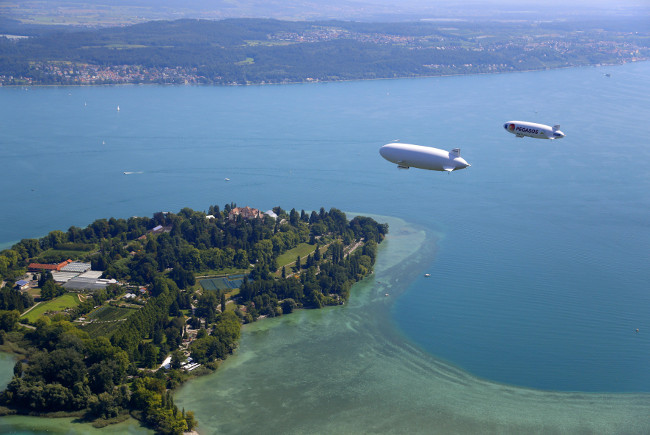
After breakfast I take the short ferry hop across to Friedrichshafen, home of the original Zeppelins which you see floating peacefully through the sky overhead almost every day. These days the airships are 75m long and house twelve passengers, with sightseeing flights ranging from 30 minutes to two hours (prices start at €255). Although a flight sadly isn’t on my itinerary on this occasion I’m advised that you’d need to book well in advance at peak times if it was.
Then on to Tettnang, an area famous for the growing of fine hops for beer brewing, whose dedicated museum is the first of its kind in Germany, taking you on a journey through the 175-year history of this underrated industry. If you’re a beer lover like myself, you’ll enjoy the pungent smell of the masses of dried hops on display and watching the freshly harvested crops loaded into the threshing machines. And concluding of course with the all-important tasting of the beers brewed on site, overseen by the resident cicerone.
Austria: Hard and Bregenz
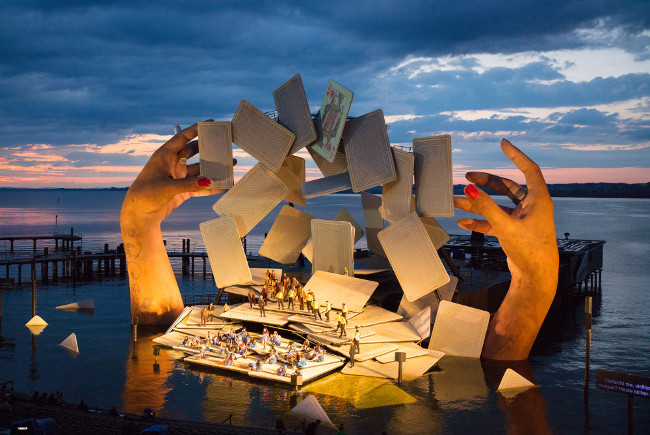
Over the border into Austria, I visit the capital of Vorarlberg – Bregenz – renowned for its Opera House and having the world’s largest floating stage. It stages major opera productions and performances by the Vienna Symphonic Orchestra, with spectacular sets unrestricted by the constraints of indoor theatres. James Bond also made an appearance here in a chase sequence for 2008’s ‘Quantum of Solace’.
Again, I’m unfortunate to be visiting while there’s no show scheduled, but it’s fascinating enough to sit in the empty stand – room enough for 7,000 spectators – and watch the last set being dismantled, imagining how special it would be to experience a show beneath the stars and backdropped by the lake.
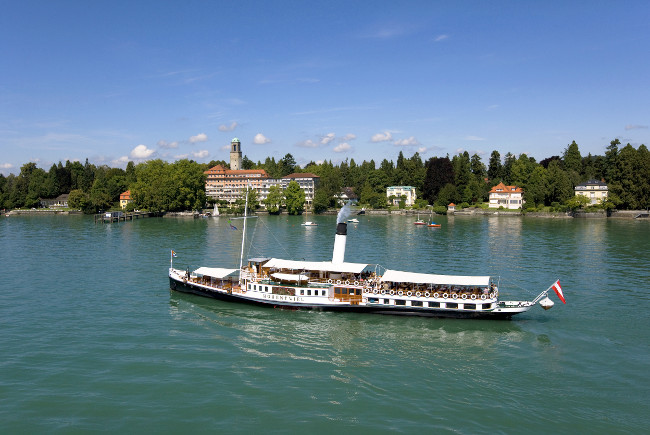
After that I stroll into town and swiftly ascend to the apex of the mountain overlooking it all, in Cable Car ‘Pfander’, with stunning vistas to behold as soon as the enveloping clouds pass. There are also plenty of mountain wildlife and farm animals to look at up here – ideal for children – as well as a choice of hiking trails and a lofty restaurant.
Later that evening, in the nearby lakeside town of Hard, I enjoy a memorable night-time cruise and five-course dinner with matching local wines aboard the regionally renowned ‘Hohentwiel’: a faithfully restored paddle steamer of the Edwardian era, manned by a fully uniformed crew. It was certainly a trip highlight to gaze out upon the gently undulating star-lit lake after a satisfying meal, serenaded by a professional jazz trio. You can also do Viennese breakfast and afternoon tea cruises if you’d prefer to sail in the sun.
Liechtenstein: Vaduz

The next day it’s time to visit another country, and they don’t come much smaller than Liechtenstein, about 30 miles’ drive to the south. With a population of less than 40,000, it is also one of the richest nations in the world, by GDP per capita.
Its cultural and financial centre – capital Vaduz – is home to its Princely Family, whose 900-year old castle perches still on a rocky outcrop overlooking the city, with the snow-capped Alps rising majestically behind it. There are fantastic views to be enjoyed from the castle grounds on a clear day, of Vaduz and the surrounding valley.
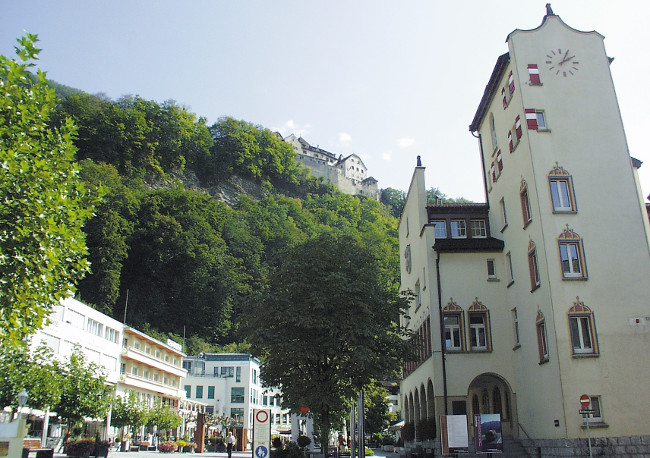
Back down into the pedestrianised main boulevard, I visit the resplendent national Treasure Chamber, showcasing exhibits belonging to the Princes of Liechtenstein, like historical weapons and armour, the crown, and opulent presents from other monarchs.
There is interestingly also on display a small piece of the moon, gifted by NASA, as apparently the moon landings would not have happened without Liechtenstein – at that time the only country with the advanced vacuum technology necessary to test if a space capsule could safely land on the planet. Interesting stuff to say the least.
Switzerland: Weinfelden
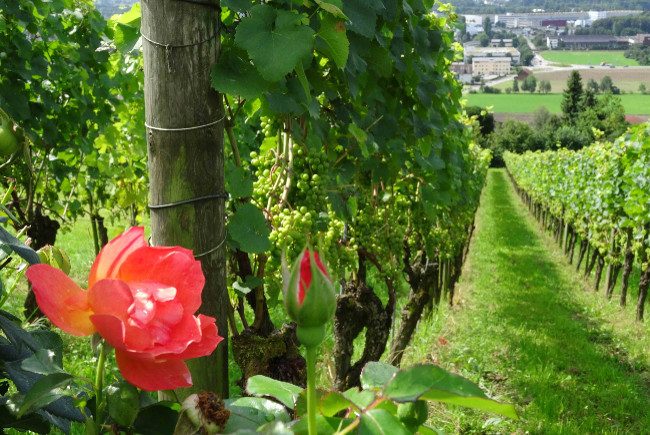
The final country on my Lake Constance tour is Switzerland, where the old town of Weinfelden (‘wine fields’) concludes my itinerary a few miles south of Konstanz, completing my circuit around the lake.
It turns out the town is appositely named to this day, with many acres of vineyards on slopes facing a long range of Alpine peaks, and it’s through these hills I partake in the Weinfelden Wine Trail: a scenic hike punctuated by a large ‘wine safe’ built into a slope. Inside are a selection of superlative vintages produced from these vines, which you raise from beneath the ground on a dumb waiter – it’s a great way to break up your hike and certainly puts a spring in your step for the rest of it!
And so concludes my time in this underrated region of Europe, which remains one of the continent’s best kept secrets, for Brits at least. A 40-minute drive or train takes you straight back to Zurich Airport, meaning you can begin or end your trip in Konstanz, doing this itinerary either way round.
But this is just a small sample of what’s on offer here – for a wealth of further information visit Bodensee website which also provides info on the ‘Bodensee Card’, offering 160 services free of charge, including boat trips on the lake and attractions across all the above countries.
Kris flew with Swiss Airlines from London Heathrow to Zurich, and also stayed at Hotel am See in Austria and Hotel Turna Malburn in Liechtenstein.












